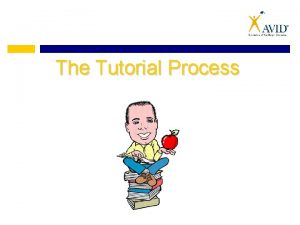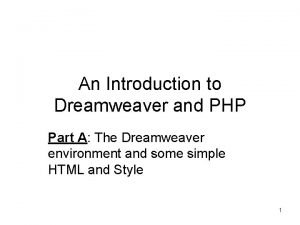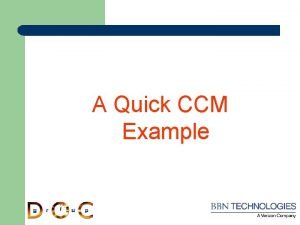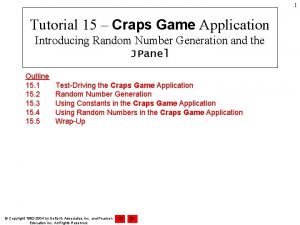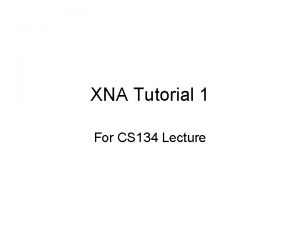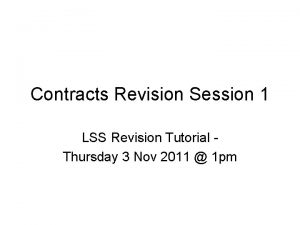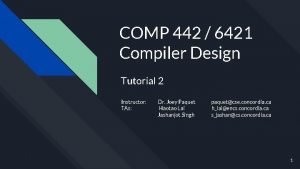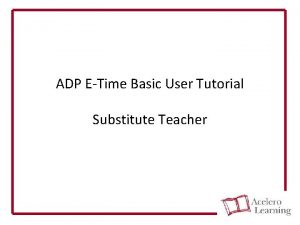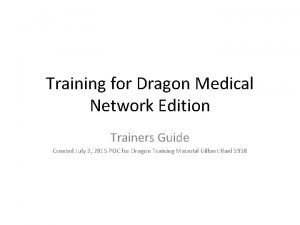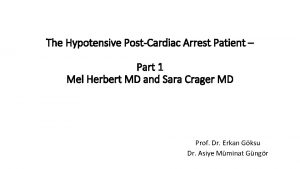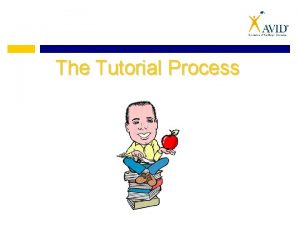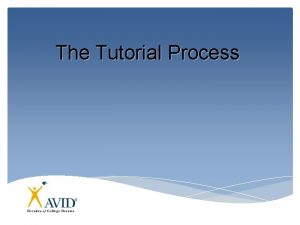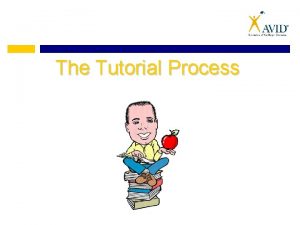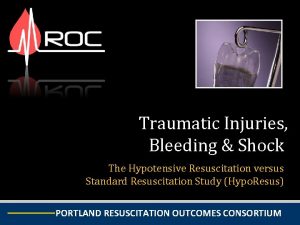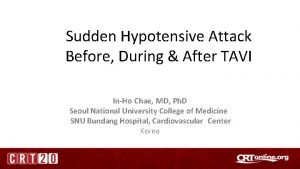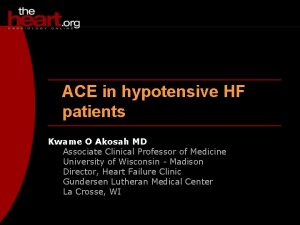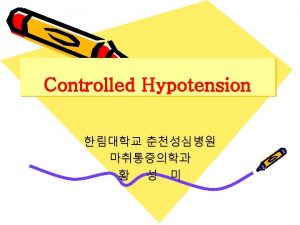The Hypotensive Patient For on site tutorials as






















- Slides: 22

The Hypotensive Patient For on site tutorials as part of the remote simulation program Professional Entry Module: U 3 This project was possible due to funding made available by Health Workforce Australia

Sponsor This project was possible due to funding made available by December 20 © Health Workforce Australia

Introductions December 20 © Health Workforce Australia

General Aims • Learn in a team setting • Blend clinical skills with team skills • Reflect critically on practice December 20 © Health Workforce Australia

Ground Rules • • • December 20 Participation Privacy Confidentiality Disclaimer Debriefing Mobile phones © Health Workforce Australia

Session Objectives • Clinical practice – Systematic approach to the hypotensive patient – Identifying common causes of hypotension – Investigations and monitoring – Treatment initiatives for the hypotensive patient • Teamwork – Communication between each other and with the patient December 20 © Health Workforce Australia

Communication December 20 © Health Workforce Australia

Can someone give some fluids…. How much is some? What fluid? Maybe John will do that I wonder if I should take some bloods He cant mean me I’m Airway December 20 © Health Workforce Australia

Jenny can you please check the blood pressure, I want to see how our fluid challenge is going December 20 I’ve checked the blood pressure, it’s 104 / 65 after 500 mls of Saline © Health Workforce Australia

Maintain situational awareness • Recap & summarise • Set goals – BP above 95 systolic, x-ray in 20 minutes • Relay information through the team leader • TL to avoid becoming involved in complex tasks December 20 © Health Workforce Australia

The hypotensive patient • In medicine and physiology hypotension is the term used for low blood pressure. • It is understood as a physiological state. • Severely low blood pressure can deprive the brain and other vital organs of oxygen and nutrients, leading to shock. • Successful management of hypotension depends on: – Rapid diagnostic assessment – Diagnosis–specific intervention December 20 © Health Workforce Australia

Lets Practice! Justin Timberlake has presented to the ED complaining of abdominal pain and vomiting for the last 2 days. He is previously well with no known medical conditions. He is feeling generally unwell with malaise and vomiting December 20 © Health Workforce Australia

December 20 © Health Workforce Australia

Severe Hypotension (shock) • Fluid loss: bleeding, severe dehydration • Distributive: sepsis, spinal • Pump failure: cardiogenic You need to decide because the management will be different December 20 © Health Workforce Australia

Sepsis • Systemic inflammatory response syndrome • Calculated incidence of adult severe sepsis in Australia and New Zealand is 0. 77 per 1000 population • 11. 8% of ICU admissions were diagnosed with severe sepsis • 26. 5% mortality – Finfer et al (2004) Adult-population incidence of severe sepsis in Australia and New Zealand Intensive Care Units; Intensive Care Med 30(4): 589 -96 December 20 © Health Workforce Australia

Managing Sepsis • • • Based on Adult Sepsis Pathway Recognise Respond and escalate Resuscitate Re-assess Refer December 20 © Health Workforce Australia

Hypovolemia • Uncontrolled bleeding is the leading cause of preventable death in trauma • Early intervention improves outcomes • Coagulopathy common after severe trauma and occurs very early • Massive Transfusion Protocols replaces blood and coagulation factors in a coordinated manner • Haemorrhage is responsible for about 40% of trauma deaths globally. Injuries are sustained from both blunt and penetrating trauma, which demonstrate different injury patterns and sites of bleeding. December 20 © Health Workforce Australia

Hypovolemia • Assessment of bleeding • Stopping the bleeding • Avoiding the lethal triad • Massive transfusion • Surgical correction of bleeding December 20 © Health Workforce Australia

Fluid Balance December 20 © Health Workforce Australia

Summary • Good communication picks up and prevents errors • Communication is an essential component of teamwork • Seek & treat the cause of hypotension • Sepsis kills December 20 © Health Workforce Australia

Acknowledgments U 1: Topic expert author: Anne Star, Morgan Sherwood U 1 Simulation session author: Anne Starr Educational consultants: Stephanie O’Regan Nurse Educator SCSSC Leonie Watterson Director Simulation Division SCSSC John Vassiliadis Deputy Director SCSSC Morgan Sherwood Simulation Fellow SCSSC December 20 © Health Workforce Australia

Disclaimer Care has been taken to confirm the accuracy of the information presented and to describe generally accepted practices. However the authors, editor and publisher are not responsible for errors or omissions or for any consequences from the application of the information in this presentation and make no warranty, express or implied, with respect to the contents of the presentation. Copyright and Permission to Reproduce This work is copyright. It may be reproduced for study or training purposes subject to the inclusion of an acknowledgement of the source: Health Workforce Australia Ed. WISE program. It may not be reproduced for commercial usage or sale. December 20 © Health Workforce Australia
 Patient 2 patient
Patient 2 patient Hot site cold site warm site disaster recovery
Hot site cold site warm site disaster recovery Avid tutorial sheet
Avid tutorial sheet Nitmed tutorials
Nitmed tutorials Macromedia dreamweaver tutorials
Macromedia dreamweaver tutorials Flash dreamweaver templates
Flash dreamweaver templates Dreamweaver php tutorials
Dreamweaver php tutorials Ccm examples
Ccm examples Craps tutorial game
Craps tutorial game Xna tutorial
Xna tutorial Opti 521
Opti 521 Online plan book
Online plan book Lss software tutorials
Lss software tutorials Compiler design tutorials
Compiler design tutorials Adp tutorials
Adp tutorials Flores247 group id
Flores247 group id Dragon medical network
Dragon medical network Radiologymasterclass.co.uk › tutorials
Radiologymasterclass.co.uk › tutorials Adobe illustrator cs tutorials
Adobe illustrator cs tutorials Haas door override setting
Haas door override setting Nitmed
Nitmed Asp.net core tutorialspoint
Asp.net core tutorialspoint Tmath::gaus
Tmath::gaus


